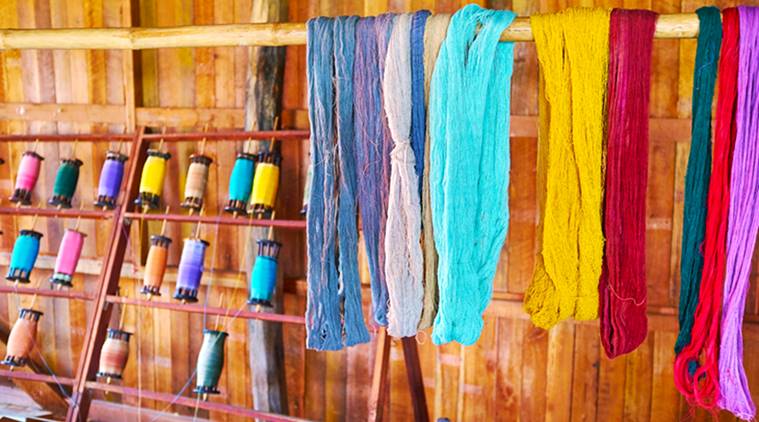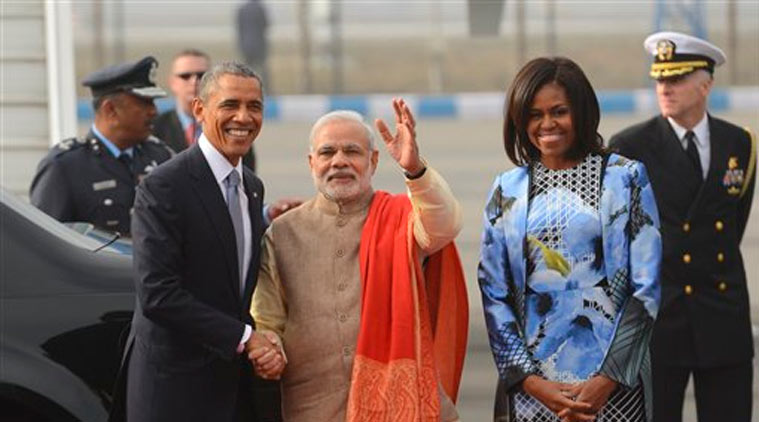Why India and its weavers needed a National Handloom Day
Why the need for National Handloom Day? When seen as instruments of soft diplomacy; handlooms and crafts empower cottage industries and showcase the multiple identities present in a country.

National Handloom Day: Handlooms are symbols of a nation’s identity, culture and inclusive development. (Source: Getty Images/Thinkstock)
For a land as rich in textiles and weaves – unique to each town, you travel through even in a state – and for a country that commemorates every event, the introduction of National Handloom Day was much-awaited. Launched in 2015, August 7 was chosen as National Handloom Day as it was the day that the Swadeshi Movement was started in 1905. The Swadeshi Movement celebrated our indigenous fabrics, weavers and the country’s artisans. In keeping with this, every year artisans and weavers are presented with ‘Sant Kabir’ awards to promote their handiwork and Indian crafts.
Symbols of Identity
Handlooms aren’t just important for aesthetic and cultural reasons, they’re also integral to political and diplomatic engagements, as they are symbols of a nation’s identity, culture and inclusive development. For instance, Indira Gandhi was known to possess an exquisite, yet simple collection of weaves and shawls. When seen as instruments of soft diplomacy; handlooms and crafts empower cottage industries and showcase the multiple identities present in a country.
Integral to Soft Diplomacy
Since the eighteenth century, aesthetic mementos, décor, craft, art and hand-made products have been integral to diplomatic relations. In the words of a French traveller, Tavernier, the Ambassador of the Shah of Persia (CE 1628–1641), on his return from India, presented his master with a “coconut shell, set with jewels, containing a Muslin turban thirty yards in length, so exquisitely fine that it could scarcely be felt by the touch.” (Heritage Crafts and traditions of India, NCERT, 2018).
A special weave from Varanasi, the ‘Kadhua’ Banarasi silk was presented to the then US First Lady Michelle Obama in 2015. Kadhua silk saris are a unique variety of Banarasi silk woven with gold and silver threads. During her maiden visit to India at the Global Entrepreneurship Summit in 2017, Ivanka Trump was gifted ‘Pochampally’ saris by the Telangana government.
Similarly, during the swearing-in ceremony in 2014 of Prime Minister Narendra Modi, Modi presented a shawl to Pakistani Prime Minister Nawaz Sharif for his mother. Later, Sharif presented a sari for Modi’s mother. Similar efforts in “sari diplomacy” have been an integral part of bilateral interactions, and were visible during the meeting between External Affairs Minister Sushma Swaraj and Bangladesh’s PM Sheikh Hasina in 2014.
Paintings also constitute an important form of cultural engagements in bilateral relationships, carrying forward the quintessential tradition of pluralism via symbols, tokens, and mementos. In 2018, PM Modi presented specially-made prints of paintings by Chinese artist Xu Beihong to President Xi Jinping during their informal summit. The paintings depicted a horse and sparrows on grass. These were painted during Beihong’s stay at Visva Bharati University, which was founded by Rabindranath Tagore.
Sustainability and Cultural Exchanges
Most importantly, handlooms are eco-friendly and a sustainable mean of earning a livelihood.
The handloom sector provides employment to 4.33 million people and is the second biggest source of employment in rural India. Approximately 95 per cent of the world’s handwoven fabric is from India (PIB, 2017). While we appreciate India’s diverse handlooms and textiles, it is important to address concerns of the handloom sector, such as those related to absence of market linkages, pricing, raw materials in labour-intensive activities like weaving, spinning and embroidery work.
To give credit where due, governments have implemented schemes and programmes to benefit artisans, weavers and rural women. The Handlooms (Reservation of Articles for Production) Act, 1985, Handloom Census, Geographical Indication, recent Twitter campaigns such as #iwearhandloom, initiatives in e-commerce such as ‘e-dhaga’, capacity building programmes and overall revival of handlooms and Khadi Gramodyog industries are required steps in the right direction. The recently launched “solar charkha” scheme has also been set up to benefit artisanal clusters.
What is required is for Indian textiles to be adopted into contemporary wear, so that younger generations start understanding and supporting these fabrics. A goal which might not be impossible to achieve given the large number of brands which are today involved in the revival of these indigenous weaves.
Do check out our new series, Warp and Weft starting this Friday on Indian weaves.
Swasti Pachauri is a social sector professional, formerly working as a Prime Minister’s Rural Development Fellow in Seoni district of Madhya Pradesh.
For all the latest Lifestyle News, download Indian Express App
© IE Online Media Services Pvt Ltd






















 The cream-coloured ‘Kadhua’ silk saree, an exclusive product of this region, was hand-woven using gold and silver threads by three classic weavers, weighed around 400 grams and costed about Rs 1.5 lakh. (Source: AP)
The cream-coloured ‘Kadhua’ silk saree, an exclusive product of this region, was hand-woven using gold and silver threads by three classic weavers, weighed around 400 grams and costed about Rs 1.5 lakh. (Source: AP) Zainul Abedin, 39, weaver, poses for photograph inside his handloom at Kotwa village in Varanasi, Uttar Pradesh, India, on Thursday Dec. 8, 2016. (Source: Dhiraj Singh/Bloomberg/File Photo)
Zainul Abedin, 39, weaver, poses for photograph inside his handloom at Kotwa village in Varanasi, Uttar Pradesh, India, on Thursday Dec. 8, 2016. (Source: Dhiraj Singh/Bloomberg/File Photo)
No hay comentarios:
Publicar un comentario